After arriving in Malaga, I started my trip along the coastline, travelling by public transportation a few hours a day. I planned to visit several habitats of Apricaphanius baeticus along the route. My intention was not to collect them, but to observe the state of their native habitats, as well as to note their presence or extinction in those habitats.
My hunt for habitats started from Tarifa, southernmost point of continental Europe, where the easternmost distribution of A. baeticus is reported. I found a report from 2008 which confirmed the presence of A. baeticus in outskirts of the town. I decided to check whether I could still find them there, 14 years after the report. Reported habitats were small puddles which were the last bodies on water in otherwise full drained riverbed. First place I went was a puddle under a highway bridge. The place was full of garbage, water was cloudy and I did not see any signs of life there. It was sad to observe because, in this same puddle, A. baeticus was indeed present 14 years ago, according to the report. I did not do any netting there but it is hard to believe any fish would live in such environment.
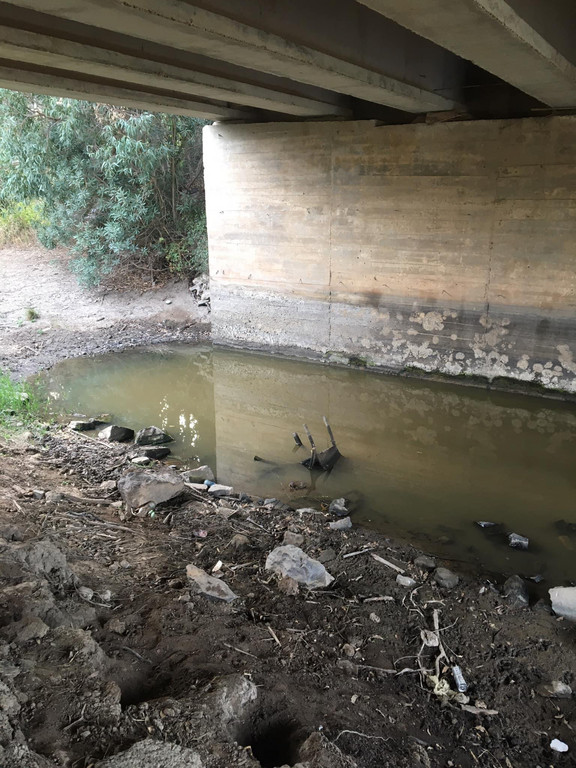
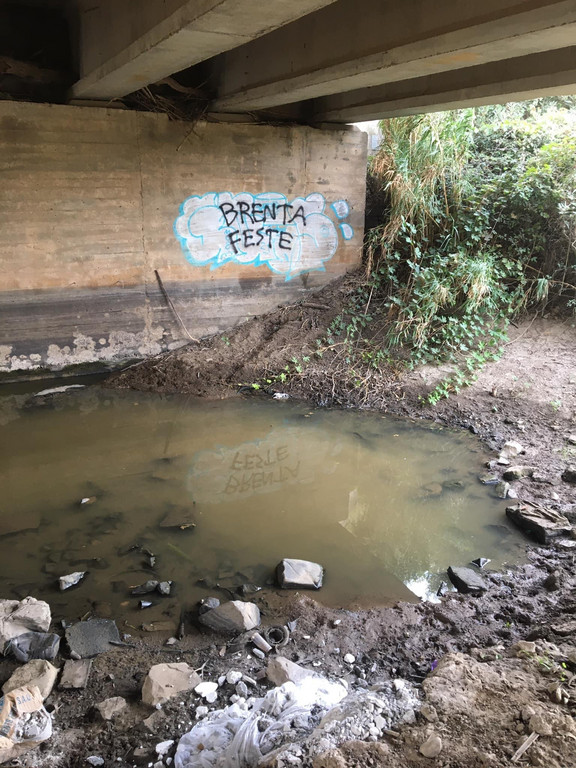
The second place I visited was a similar puddle under another bridge close by, but deeper and without garbage. It looked like a promising place, but I didn't see any sign of fish there. However, there were frogs and, to my surprise, two turtles lurking from a drainage pipe, juvenile and adult, probably representing some of the pond turtle species native in the area.

The third site was located at an ancient Roman bridge. It was difficult to reach, since the surrounding vegetation had totally engulfed it. I managed to get through it and got to the bridge. Underneath was a nice big puddle, and from the movement in the water I could assume there must be at least some fish. I managed to get down there (wasn’t too easy either) and started netting. After the first dippings of the net I could tell there are plenty of shrimp and also an invertebrate species, swimming with two oar-like appendages, similar to daphnia, but bigger and more elongated, around 1cm in size. After closer investigation I believe the shrimp are probably Atyaephyra desmarestii. I collected a small group to bring back home. This was a nice reward, since I had been looking for these European native freshwater shrimp for a while. At this point a guy appeared on the bridge and told me he lived there and that I was most welcome to fish there. With his blessings I continued my efforts to find some fish, although the guy at the bridge somewhat reminded me of the bridge troll from the Three Billy Goats tale.
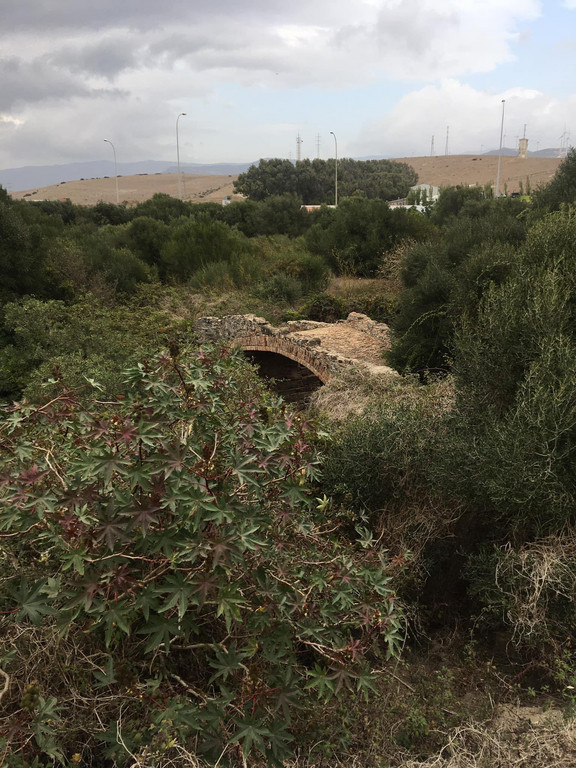
I continued netting from different sides of the puddle but could only find these two species, still no sign of fish. This place looked like a really potential habitat for A. baeticus, based on the reports I read. The movement in the water that I had initially I noticed was probably frogs. If there were any fish, they were probably larger than A. baeticus. Unfortunately I did not have more time to investigate it thoroughly, since I had to catch the last bus and continue my journey. I am quite certain there are no A. baeticus in those three habitats anymore. But more thorough investigation is needed to know for sure. All of those habitats consisted of brown and cloudy water, which made it impossible to observe movement deeper in the water.
Next habitat I visited was Rio Salado downstream and lagoon, located right next to Conil de la Frontera, a small town between Tarifa and Jerez de la Frontera. The salty lagoon was apparently formed by salt collecting activity back in the day. Rio Salado, meaning Salty River, is apparently quite salty as well. Here both A. baeticus and also Fundulus heteroclitus have been reported previously.
The lagoon was disconnected from the river due to low water level, leaving it as wide and shallow pool. Here the water was clear with sandy bottom on the sides, which made it easy to walk and observe any movement in the water. However, when I tried to get to more center of the pool, the bottom turned to deep clay which was basically impossible to walk on, so I couldn’t get more than few meters away from the banks of the pool. No aquatic vegetation except clumps of algae. Surrounding terrestrial vegetation was dense and its roots reached water from riverbanks.
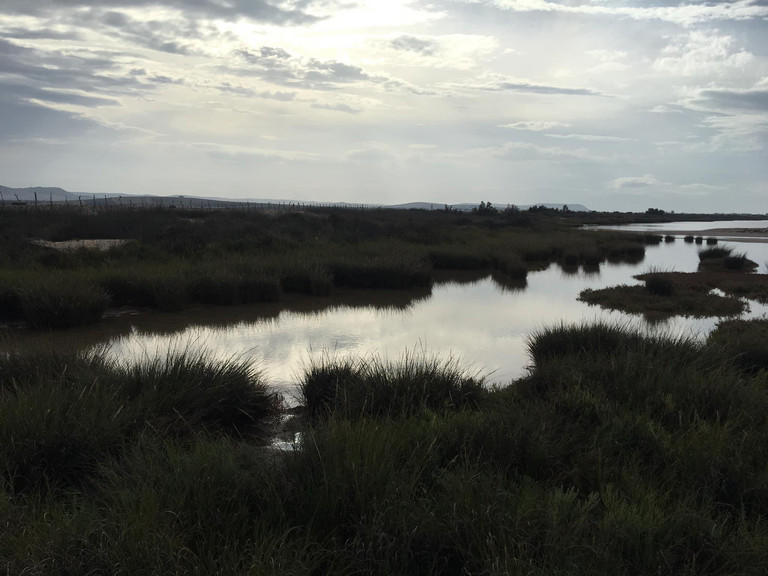
I circulated the whole pool, searching very closely, and was disappointed again - no A. baeticus or F. heteroclitus to be seen. I tried to detect any water movement, checked in and around the vegetation on the sides. Indeed there were some bigger fish in the middle, they kept a secure distance of 10-15m from me so I could only tell these fish are of 20-30cm in size. Besides them I could only find shrimp.
I also checked the shallow, nearly drained, riverbed at the end of Rio Salado. Plenty of small gobies, presumably Pomatoschistus microps, with some Cyprinidae and seagulls looking for easy snack. Also the bigger fish from the lagoon were there as well. It is quite clear that a small fish like A. baeticus wouldn’t have a chance of survival in such environment.
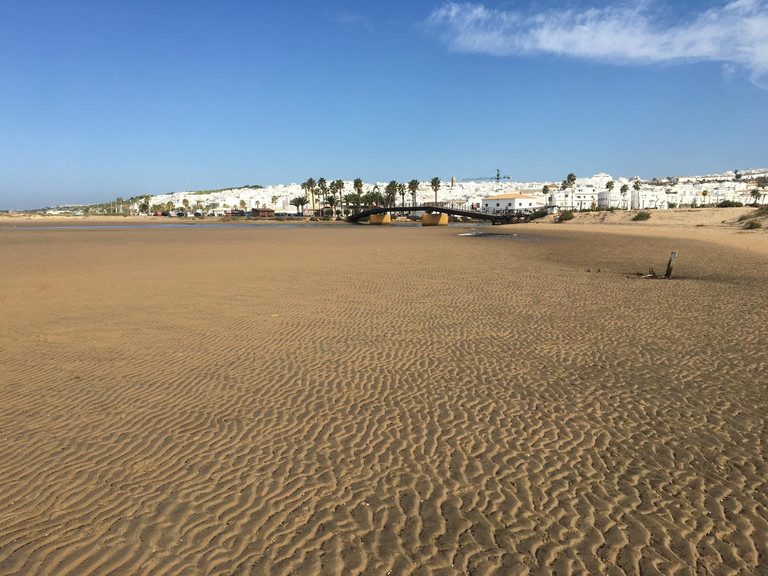
At this point I started to feel very frustrated. All these places I visited so far are previously confirmed habitats or in the formal distribution range of A. baeticus, so it is sad to see they had been, most likely, lost. The distribution range seems to get smaller and smaller - so now it is the time to focus on conserving as many populations as possible, as they might not be out there for long. However, I still refused to give up my goal to see A. baeticus in its native habitat.
While I was passing through Huelva, on my way from Sevilla to Portugal, I made a last attempt to observe A. baeticus in their natural habitat. I had read that the westernmost population should be in another side of the river, Corrales, so I took a bus there. I could see in Google maps that there should be a reasonably big pond just a few hundred meters from the bus stop, so I headed there. However it turned out to be totally dried out.

The next site that I visited was an extensive salt marsh right next to the Corrales river. It was an annoying place to reach, located right next to big intersection, and I had to cross several big roads to get to the right side of it. There were plenty of ponds in the marsh, which looked very promising. I made my way through the thick marshy vegetation. I had to move quickly because, whenever I stopped, the vegetation beneath my feet would slowly start to sink. It didn’t take too long to get my shoes wet.
After struggling for around 15 minutes I got to the first waterhole - only a square meter in size. To my delight, I immediately spotted two tiny fish escaping into the immersed vegetation. Their size matched Aphaniidae but I couldn’t be sure, and I tried to catch them. This proved to be close to impossible since the vegetation was so dense, they could disappear ever deeper into it, probably even to escape to neighboring pond underneath it. Meanwhile, I had already sunk ankle-deep into the water, so I just had to get going in order not to get stuck there all alone.
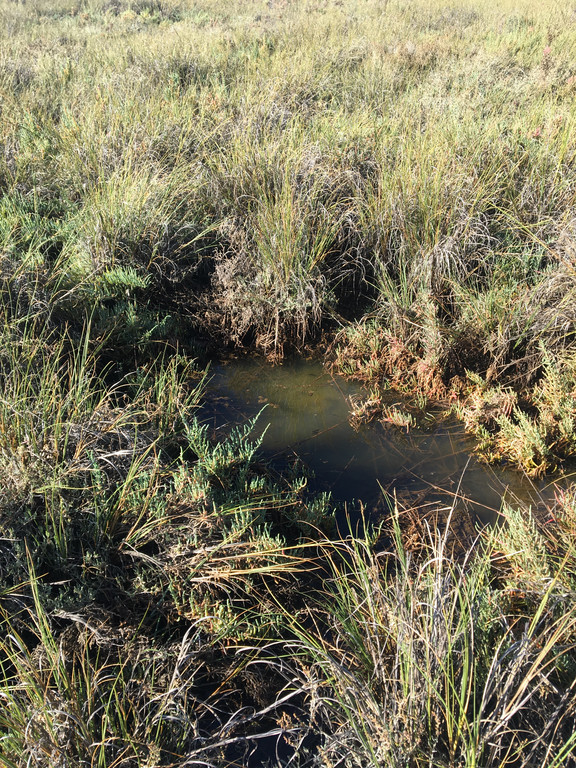
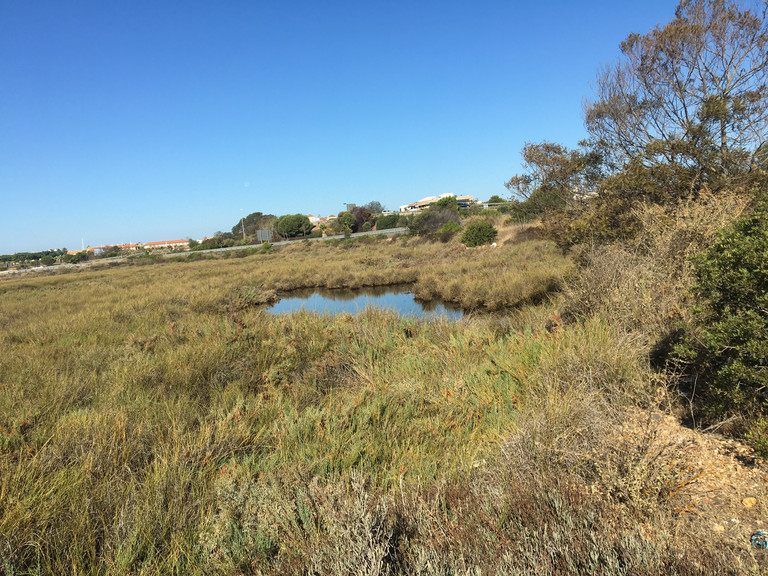
I decided to check a much bigger pond just a few meters from the previous one, so I stumbled my way there. And I was so happy to see there were plenty of fish! I could tell from their swimming style that they were definitely Aphaniidae, so must be A. baeticus. I did check the bottom which consisted of very deep layer of detritus and leaf litter etc., impossible to walk on, so I couldn’t get into the water with the light gear I had. I managed to do a few dips with my net but the fish immediately hid deep in the vegetated banks, I could only catch mud - I decided to let them be. Although I would have loved to get a picture of them, it was enough for me to see a good colony of them still surviving there, meaning that the westernmost population still refuses to disappear from their native lands.